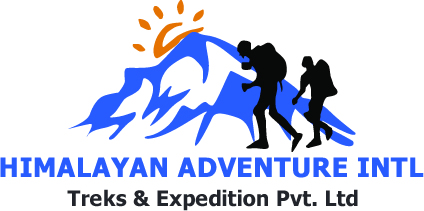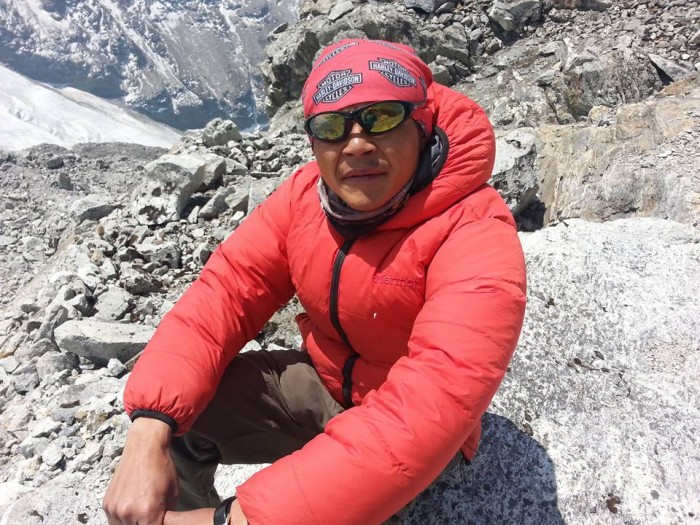The Everest Three Passes Trek, also known as the Everest Three High Pass Trek, is the most thrilling and challenging adventure trek in the Everest region. Combining world-class scenery, diverse terrain, traditional Sherpa culture, and high-altitude adventure, this trek is a dream for seasoned trekkers. The route traverses three of the highest trekking passes in Nepal—Kongma La (5,535m), Cho La (5,420m), and Renjo La (5,360m)—while offering unforgettable views of Everest, Lhotse, Makalu, and Cho Oyu.
At Himalayan Adventure International Treks, we offer expertly guided treks, detailed itineraries, competitive pricing, and ethical travel practices, making your journey across the Three Passes trek as rewarding as the destination.
What is the Everest Three Passes Trek?
The Three Passes Trek is a circular trail in the Everest (Khumbu) region that links the four major valleys: Bhotekoshi, Gokyo, Khumbu, and Imja. It includes ascents to three dramatic high passes, hence the name:
-
Kongma La Pass (5,535m)
-
Cho La Pass (5,420m)
-
Renjo La Pass (5,360m)
This trek also includes highlights like Everest Base Camp (EBC), Gokyo Lakes, and Kalapatthar—each a rewarding destination in itself.
If you're wondering, “What is the 3 passes route in Nepal?”, it’s a combination of all these iconic places into one extraordinary circuit, offering an unrivaled Himalayan experience.
How Long Does 3 Passes Trek Take?
Typically, the Everest Three Passes trek takes between 17 to 21 days, depending on acclimatization, weather, physical fitness, and whether you take the Three Passes trek clockwise or counterclockwise.
Here is the detailed 3 Passes Trek Nepal itinerary (counterclockwise):
EBC 3 Passes Trek Itinerary – 20 Days
Day 1: Arrival in Kathmandu
Meet and greet at the airport, transfer to hotel, and trek briefing.
Day 2: Fly to Lukla (2,840m) – Trek to Phakding (2,610m)
A scenic mountain flight followed by a 3–4 hour trek.
Day 3: Trek to Namche Bazaar (3,440m)
Enter Sagarmatha National Park and ascend to the Sherpa capital.
Day 4: Acclimatization in Namche
Hike to Everest View Hotel or Khumjung village.
Day 5: Trek to Tengboche (3,860m)
Visit the famous Tengboche Monastery with views of Ama Dablam.
Day 6: Trek to Dingboche (4,410m)
Pass rhododendron forests and cross the Imja River.
Day 7: Acclimatization in Dingboche
Optional hikes to Nangkartshang Peak or Chhukung.
Day 8: Trek to Chhukung (4,730m)
A short hike to prepare for the first high pass.
Day 9: Cross Kongma La Pass (5,535m) – Trek to Lobuche (4,910m)
The toughest pass but extremely rewarding with panoramic views.
Day 10: Trek to Gorak Shep (5,164m) – Visit Everest Base Camp (5,364m)
Visit EBC and return to Gorak Shep for the night.
Day 11: Climb Kala Patthar (5,545m) – Trek to Dzongla (4,830m)
Sunrise view over Everest, then descend towards Cho La pass.
Day 12: Cross Cho La Pass (5,420m) – Trek to Dragnag (4,700m)
Icy and steep terrain; be cautious of weather conditions.
Day 13: Trek to Gokyo (4,790m)
Cross the glacier and reach the pristine Gokyo Lakes.
Day 14: Hike to Gokyo Ri (5,357m) – Rest Day
One of the best viewpoints of the entire trek.
Day 15: Cross Renjo La Pass (5,360m) – Trek to Lungden (4,380m)
A spectacular but steep pass with excellent views of Everest.
Day 16: Trek to Namche Bazaar
Rejoin the main Everest trail.
Day 17: Trek to Lukla
Celebrate your successful trek.
Day 18: Fly back to Kathmandu
Free time for shopping and sightseeing.
Day 19: Final Departure
This 3 Passes trek itinerary ensures proper acclimatization and safe travel across all high passes.
Three Passes Trek Map & Distance
The Three Passes Trek distance covers approximately 170 kilometers (105 miles). A detailed Three Passes Trek map or Everest 3 Passes Trek map can help visualize the circuit. You'll find comprehensive maps with elevation profiles and alternate trails on our website.
If you're looking for a 3 Passes Trek Nepal map, Himalayan Adventure International Treks provides GPS-coordinated maps and printed versions for every client.
Three Passes Trek Cost – What You Need to Know
If you're asking, “How much does the 3 Pass trek cost?” or “How much does trekking cost in Nepal?”, here’s a breakdown.
Standard Package Cost with Himalayan Adventure International Treks:
USD 1,450 – 1,750 per person (based on group size and services)
Inclusions:
-
Domestic flights (Kathmandu–Lukla–Kathmandu)
-
Licensed guide & porter
-
Permits (Sagarmatha National Park & Khumbu Pasang Lhamu Municipality)
-
Full board meals during the trek
-
Accommodation in tea houses/lodges
-
First aid kit and trekking map
-
Pre-trek briefing and post-trek celebration dinner
Exclusions:
So, how much does a trek in Nepal cost? Generally, treks range from $800 to $2,500+ depending on duration, location, and service level. The Three Passes trek cost is moderate for a challenging high-altitude trek with extensive logistics.
Three Passes Trek from Jiri – Classic and Extended
For trekkers who want to skip the Lukla flight or desire a longer experience, the Three Passes trek from Jiri is a perfect choice. Starting from Jiri adds 5–7 days to your itinerary and allows you to experience traditional village life before entering the high Himalayas.
It also offers gradual acclimatization and fewer crowds in the early stages. You’ll follow the original route used by Sir Edmund Hillary and Tenzing Norgay in 1953.
Three Passes Trek in December – Is it Worth It?
Wondering if you should attempt the Three Passes Trek in December? Here’s what you need to know:
Pros:
-
Crystal-clear skies
-
Fewer trekkers on the trails
-
Amazing sunrise and sunset views
-
Teahouses are less crowded
Cons:
With proper gear and an experienced guide from Himalayan Adventure International Treks, the Three Passes trek in December can be a magical experience—but only for experienced and well-prepared trekkers.
Everest High Passes Trek: Best Time to Go
The best seasons for the Everest High Passes trek are:
-
Spring (March to May): Warm days, blooming rhododendrons, excellent visibility
-
Autumn (September to November): Clear skies, stable weather, perfect conditions
Avoid peak monsoon and mid-winter unless you are an expert in extreme conditions.
Three Passes Trek Clockwise vs. Counterclockwise
Most trekkers do the Three Passes trek counterclockwise starting with Kongma La. This offers:
-
Better acclimatization
-
Gradual altitude gain
-
Easier logistics
However, the Three Passes trek clockwise starting with Renjo La is also possible, though more demanding in terms of early altitude exposure.
Three Passes Trek Green Valley – Offbeat and Sustainable
The Three Passes trek green valley refers to the less-explored sections like the Thame Valley and Nangpa La route, which are rich in biodiversity and Sherpa culture. These hidden gems promote eco-tourism and cultural preservation, aligning with the values of Himalayan Adventure International Treks.
What Are the Three Peaks Climbing in Nepal?
If you’re looking to combine trekking with mountaineering, Nepal offers several “trekking peaks” that pair well with the Three Passes:
Island Peak (Imja Tse – 6,189m) – near Chhukung
Lobuche East (6,119m) – near Lobuche
Pokalde Peak (5,806m) – near Kongma La
These are often added to the Three Passes route, offering a mix of trekking and technical climbing.
Why Choose Himalayan Adventure International Treks?
✅ Local Expertise:
We are a trusted Nepalese company with a deep connection to the Himalayas.
✅ Safety First:
All our treks are led by trained, experienced guides with first aid and altitude training.
✅ Custom Itineraries:
We offer both group and tailor-made private packages.
✅ Responsible Travel:
We prioritize sustainable tourism and support local communities.
Final Thoughts
The Everest Three Passes Trek is not just a journey; it’s an achievement that stays with you for a lifetime. From the panoramic views at Gokyo Ri and Kalapatthar to the exhilarating climbs over Kongma La, Cho La, and Renjo La, every step offers unmatched beauty and a sense of accomplishment.
Whether you're asking “How much does the 3 pass trek cost?”, “How long does 3 passes trek take?”, or looking for the Three Passes Trek map, Himalayan Adventure International Treks is here to guide you from start to summit.
Ready for the Ultimate Trek?
👉 Contact Himalayan Adventure International Treks Pvt. Ltd. today to book your Everest Three Passes Trek and start planning the adventure of a lifetime!

 Plan Your Trip Now
Plan Your Trip Now 




